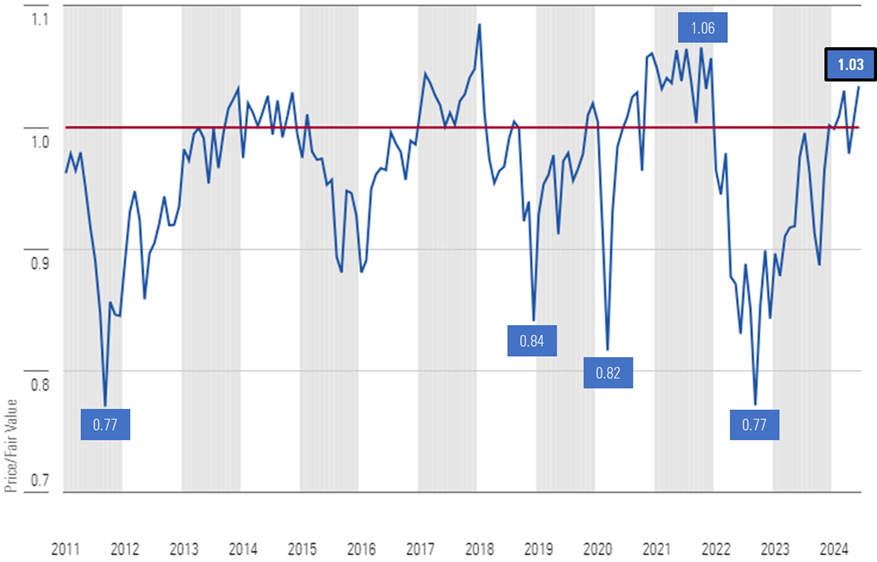To provide accurate and reliable data, it's important to check the data and sources that are used by AI stock prediction and trading platforms. Insufficient data could lead to incorrect predictions, loss of money, and a lack of trust. Here are 10 best tips to evaluate data quality and the source:
1. Verify the source of data
Verify the source of the information. Ensure that the platform uses well-known, reputable data sources (e.g. Bloomberg Reuters Morningstar, or stock exchanges such NYSE, NASDAQ).
Transparency. The platform should publicly disclose the sources of data it relies on and be able to update them regularly.
Avoid dependence on a single source: Trustworthy platforms integrate information from multiple sources in order to eliminate biases and mistakes.
2. Examine the freshness of data
Real-time and delayed data: Decide if a platform offers real-time data or delayed. Real-time trading needs real-time data, while delayed data is sufficient for long-term analysis.
Check the frequency of updating data (e.g. hourly or minute by minute or even daily).
Historical data accuracy - Ensure that all historical data is uniform and free of gaps or irregularities.
3. Evaluate Data Completeness
Find out if there is missing or incorrect data.
Coverage: Ensure the platform is able to cover a broad selection of stocks, indices and markets that are relevant to your trading strategy.
Corporate actions: Check if the platform records stock splits, dividends, mergers and other corporate actions.
4. Test Data Accuracy
Cross-verify your information: Verify the platform's data against other trustworthy sources.
Error detection - Search for outliers, incorrect prices or financial metrics that are not in line with.
Backtesting: Use old data to backtest trading strategies and check if the results align with the expectations.
5. Granularity of data may be evaluated
The level of detail: Make sure that the platform can provide a full set of data, including prices for intraday quantity bidding-asking spreads as well as order book depth.
Financial metrics: Make sure the platform provides complete financial statements, such as the balance sheet, income statement and cash flow. Also, ensure that it includes key ratios like P/E (P/B), ROE (return on equity) and more. ).
6. Make sure that you are checking for data cleaning and Processing
Normalization of data is essential to ensure consistency.
Outlier handling (handling anomalies) Check that the platform is able to handle outliers and anomalies.
Imputation of missing data is not working - Make sure whether the platform is using solid methods to fill in missing data points.
7. Verify data for consistency
Make sure that all data is aligned to the same timezone. This will eliminate any discrepancies.
Format uniformity - Examine whether the data is presented in the same way (e.g. units or currency).
Cross-market compatibility: Make sure that the information coming from exchanges and markets are harmonized.
8. Evaluate the Relevance of Data
Relevance for trading strategy - Make sure that the data corresponds to your style of trading (e.g. quantitative modeling, quantitative analysis, technical analysis).
Features selection: Check whether the platform provides useful features to improve your predictions (e.g. sentiment analysis, macroeconomic indicator news information).
Review Data Security Integrity
Data encryption - Make sure that your platform is using encryption to protect data during transmission and storage.
Tamper proofing: Make sure that the information on the platform is not being altered.
Make sure that the platform must be in compliance with laws on data protection.
10. Transparency of the AI model's transparency on the Platform can be testable
Explainability: Ensure that the platform offers you insight on the AI model's use of data to formulate predictions.
Check if there is an option to detect bias.
Performance metrics: Determine the quality of the platform by looking at its track record, performance metrics, and recall metrics (e.g. precision and accuracy).
Bonus Tips:
Reputation and feedback from users Review reviews of users and feedback to evaluate the credibility of the platform.
Trial time: You may evaluate the quality of data and capabilities of a platform by using an online demo or trial before you decide to purchase.
Customer support: Check that the platform provides a dependable customer support to assist with questions about data.
With these suggestions to help you better evaluate the data quality and sources of AI platform for stock predictions and make sure you are making an informed and trustworthy trading decision. Have a look at the top his explanation about ai for investment for blog recommendations including best ai trading software, ai for stock predictions, ai investment platform, ai stock picker, ai chart analysis, best ai stock, ai stocks, ai for stock trading, ai investing platform, ai stock and more.

Top 10 Ways To Evaluate The Scaleability Ai Analysis Of Trading Platforms And Stock Prediction
To ensure that AI-driven stock trading and prediction platforms can scale and scalable, they need to be able to handle the ever-growing volume of data and the increasing complexity in markets, in addition to the demands of users. Here are the 10 best ways to assess the scalability.
1. Evaluate Data Handling Capacity
Tip: Verify that the platform you are using is able to process and analyse massive datasets.
What is the reason? Scalable platforms should be able to handle increasing volume of data without performance degradation.
2. Test Real-Time Processor Capabilities
Tip: Check the capability of the platform to handle real-time information streams, such live stock prices or breaking news stories.
Why? Real-time trading decisions require analysis of data in real-time. Delays could lead to lost opportunities.
3. Cloud Infrastructure Elasticity and Check
Tip: Check if your cloud platform (e.g. AWS, Google Cloud or Azure) and has the ability to dynamically scale resources.
Why: Cloud platforms offer elasticity, allowing the system to increase or decrease its size according to demand.
4. Algorithm Efficiency
Tips: Find out the effectiveness of AI models employed to predict (e.g. Deep Learning or Reinforcement learning).
Why: Complex algorithmic structures can be resource-intensive. Optimizing them is the most effective way to scale.
5. Explore Parallel Processing and distributed computing
Tip: Verify that the platform supports parallel processing frameworks or distributed computing frameworks.
Why: These technologies allow faster data processing and analysis across multiple nodes.
Examine API Integration. API Integration.
Check the platform's capability to integrate external APIs.
Why? Because the platform is able to adjust to changing data sources and trading environments thanks to seamless integration.
7. Analyze User Load Handling
Utilize a high-traffic simulator to check how the platform reacts under stress.
What's the reason? The performance of a scalable platform is not affected by the rise of users.
8. Examine the Model Retraining Adaptability
Tips: Examine how often and efficiently AI models are being trained with the help of new data.
The reason is that markets change and models have to change quickly to ensure the accuracy.
9. Check for Fault tolerance and redundancy
Tip: Make sure your platform has failover mechanisms to handle software or hardware malfunctions.
Reason trading can be costly, so the ability to handle faults and scale are essential.
10. Monitor Cost Efficiency
Examine the costs of scaling up the platform. This includes cloud resources as well as data storage, as and computational power.
Reason: Scalability should not be a burden that is unsustainable which is why balancing performance with expense is critical.
Bonus Tip: Future-Proofing
Making sure that the platform can be able to accommodate emerging technology (e.g. advanced NLP quantum computing, quantum computing) and regulatory changes.
By focusing on these aspects, you can effectively assess the scale of AI stock prediction and trading platforms. This will ensure that they are reliable, efficient, and ready for future expansion. Take a look at the top official statement about best ai penny stocks for site examples including investing with ai, best ai stocks, ai tools for trading, invest ai, investing with ai, ai copyright signals, ai options, ai options, ai for trading stocks, best stock prediction website and more.
